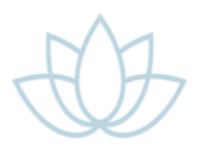Low Blood Pressure Treatment in Five Points - Raleigh, NC

Unlike high blood pressure, low blood pressure (hypotension) may be relatively less dangerous and not as well-known. However, this doesn’t mean it should be ignored.
Normal Blood Pressure vs. Low Blood Pressure:
Blood pressure is typically measured using a blood pressure cuff, technically called a sphygmomanometer. Inside is a quantity of mercury (Hg) similar to what is found in non-digital outside thermometers. Each millimeter (mm) of mercury (Hg) is used to indicate the level of pressure your heart and vascular system are producing, measured in mmHg. The top number is systolic pressure, measuring how much pressure your heart is generating in arteries/veins/capillaries as it pumps blood around your body. The second number is diastolic pressure, measuring how much pressure there is in your arteries sending blood back to the heart, between heart beats.
120mmHg over 80mmHg is considered the upper benchmark for normal blood pressure. Physicians list 90mmHg over 60mmHg as the lower benchmark for declaring a patient’s blood pressure lower than normal, called hypotension. No two patients are alike, so what may be considered good blood pressure for your athletic neighbor, may be different from your good blood pressure. Those who are more physically active for instance, typically have lower resting heart rates and thus lower acceptable blood pressure.
But for people who are not professional athletes, a blood pressure in the danger areas listed below can be serious (athletes are not immune to hypotension, either). A blood pressure chart may help make sense of these numbers:
Low blood pressure (hypotension): 90mmHg/60mmHg and below Normal: 91-120mmHg/ 61-80mmHg Prehypertension: 120-140mmHg/ 80-90mmHg High blood pressure (Stage 1 hypertension): 140-160mmHg/90-100mmHg Very high blood pressure (Stage 2 hypertension): 160-180mmHg/100-110mmHg Hypertensive crisis (requiring immediate emergency care): 180mmHg/110mmHg and above
When measuring blood pressure, either a systolic or diastolic number in a danger zone is all that is required to qualify as hypertension or hypotension, even if the other number is at a perfect blood pressure level.
Symptoms of Low Blood Pressure
Blood pressure numbers don’t tell the entire story, however, behind the stats are some very real and dangerous symptoms. Symptoms of low blood pressure can include:
- Syncope (fainting)
- Dizziness
- Trouble concentration/fogginess
- Fatigue
- Depression
- Nausea
- Fast, reduced capacity breathing
- Skin that looks pale feels cold and wet
- Blurred vision
Types of Hypotension
Within the scope of hypotension (low blood pressure) there are a few specific subtypes:
- Orthostatic: As a result of standing, your body has receptors (baroreceptors) in the legs that tell your body that blood is pooling in your lower extremities and to send it elsewhere, evening things out. As we age, though, these receptors can become weak or inactive, turning your otherwise normal blood pressure into low blood pressure upon standing. This can even be accompanied by fainting (syncope) in extreme situations.
- Postprandial: Ever hear of the postprandial dip? It’s that feeling of drowsiness after you eat. However, for some people, the effect can be severe, causing low blood pressure.
- Neural: Our brains control our bodies. Typically found in young patients, neural mediated hypotension is a result of a miscommunication between the brain and the nerves controlling heart rate and venous/arterial pressure. The signals are switched and instead of increasing blood pressure in certain situations, blood pressure is reduced.
- Shy-Drager Syndrome: This is a condition in which our autonomic nervous system atrophies. The autonomic nervous system (ANS) is responsible for supporting and managing our body’s automatic functions, like breathing, digestion, sleep, brain function and maintaining normal heart rate/ normal blood pressure.
Some Causes of Low Blood Pressure:
Low blood pressure can be caused by a wide variety of factors and conditions, including:
- Allergic reaction
- Pregnancy
- Heart attack
- Bradycardia (slow heart rate)
- Addison’s disease
- Low blood sugar
- Diabetes
- Infection
- Vitamin deficiency
Check with a doctor to explore the other causes of low blood pressure in depth.
Low Blood Pressure Treatment
With tests including, a pressure level assessment via sphygmomanometer, blood testing , electromyography (EMG), EKG, stress tests and more, a diagnosis may be right around the corner.
Specific low blood pressure treatment options like increasing your sodium intake, hypotension drugs, as well as, upping your intake of water, low blood pressure can be very manageable. However, first check with a qualified medical professional before starting any treatment, prescription or home remedy.
The worst thing to do is ignore your symptoms. If you have any of the symptoms for low blood pressure or high blood pressure, see a doctor.
Request more information on Low Blood Pressure Treatment today. Call (919) 301-0841 or contact Family Wellness Clinic & Regenesis MD online.
Family Wellness Clinic & Regenesis MD
Address
8020 Creedmoor RdRaleigh, NC 27613
(919) 301-0841
www.regenesismd.com

